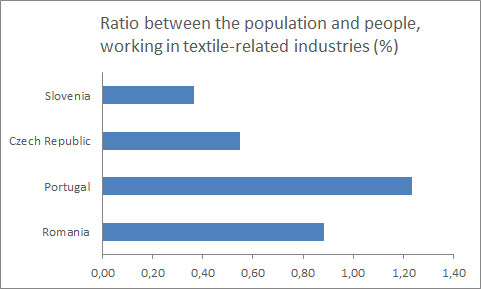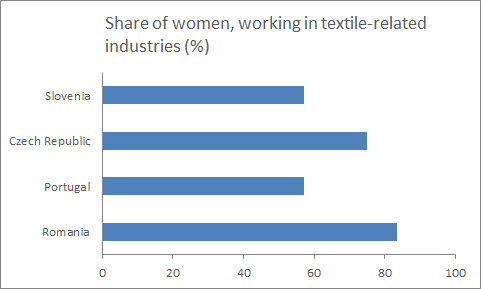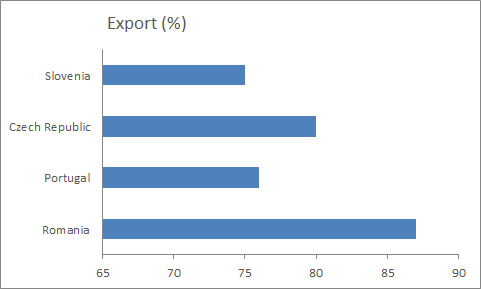Guide for intercultural partnership
In this Guide, we are presenting the Intercultural Partnership developed between the partners of the international ERASMUS+ project E-learning course for innovative textile fields (Advan2Tex). Between the five partner institutions, which come from four different European Union countries (Romania, Portugal, Czech Republic and Slovenia), one can recognize many differences, but also similarities.
6. Analysis of the elements of Intercultural Partnership
6.2. Similarities and differences regarding the situation in textile-related industries
We have discovered many differences regarding these criteria.
The largest ratio between the population and people, working in textile-related industries, is in Portugal, 1,23 %, with a workforce of 128.414.
In Romania, textile-related industries, present a main economic branch at the national level. This is confirmed by a large number of workers in textile and clothing industry, 176.000, which represents 0,88 % of the whole population.
The ratios are lower in Czech Republic and Slovenia: 0,55 and 0,37 %, Figure 2.

Figure 2: Ratio between the population and people, working in textile-related industries
Similarities and differences can be seen also considering other criteria, such as number of workers, also related to the gender, number and size of companies and export ratio, Figures 3 and 4. As can be seen in the Annex (Ch. 6), at present there is still greater number of women working in clothing industry compared to the textile industry.

Figure 3: Share of women, working in textile-related industries

Figure 4: Export ratios of textile-related industries